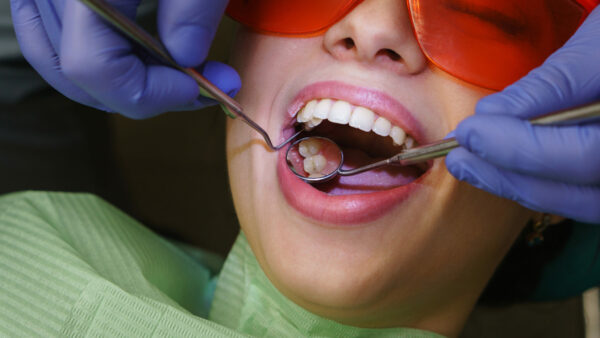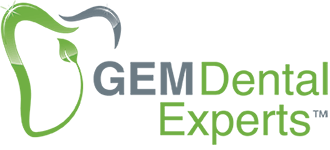
May 12, 2022
by Gabriele Maycher, CEO, GEM Dental Experts Inc. BSc, PID, dip DH, RDH
Q: I just started working in a practice where restorative dentistry has been the primary focus and periodontal therapy has been neglected. How do I begin to make the transition toward a more perio-focused process of care?
A: Chances are that most patients in your new practice have active periodontal disease, and a standard “cleaning” appointment every six months isn’t going to resolve their problems. That said, providing a higher level of care becomes tricky when patients start to question why their failing oral health was never addressed by the previous clinician, why you’re recommending changes in the treatment plan or why appointments are becoming more costly.
This type of transition can create a lot of stress on the clinician and the practice, so it’s wise to start slowly. The following two-step transition plan can help you begin to integrate industry best practices. And it is based on the type of patient you are scheduled with: new patient or current recall patient.
Step 1. Begin your transition with new patients since they have no preconceived standard-of-care expectation.
The new patient appointment will be scheduled for 90 minutes and consist of a comprehensive oral exam and radiographs (as needed). You won’t begin debridement during this appointment for most patients because some level of periodontal disease will exist and you’ll need the time to gather a baseline of assessments and to discuss the current periodontal condition, the complexity of treatment, the progression of disease and long-term prognosis if left untreated, the impact of oral health on overall health, and the cost of care.
For those new patients who have a healthy gingiva, <3mm pocket depths and <10% bleeding on probing, you will be able to complete treatment during the 90-minute appointment. But for 95 percent of patients with gingivitis or periodontitis,1 you may need a treatment plan that includes up to six debridement appointments plus a re-evaluation appointment to achieve the parameters of health. For your gingivitis patients, you’re aiming for pocket depths <3mm and <10% bleeding on probing. For your periodontitis patients, the parameters of health include pocket depths <4mm and <10% bleeding on probing with no 4mm pocket depths bleeding.2
While your new patients will be transitioned immediately, the balance of your recall patients will be transitioned as outlined below.
Step 2. You will maintain the standard of care that your recall patients are accustomed to in your practice, with one important change: you will probe, regardless of whether it’s due. Then you will explain that the current treatment isn’t working to get them to health. Discuss the need to change direction by first establishing a new baseline to assess severity, complexity, progression, and prognosis. This will require a comprehensive oral exam at the next recall appointment, and at that time you may require a few more radiographs (FMS for periodontitis patients).3 You will schedule the patient for 90 minutes and, most likely, will not be starting treatment. Be sure to get consent for this change and document it.
Now, here is some verbiage that will assist you in your transition discussions:
1. Converting recall patient conversation
a) “There are still areas in your mouth that have not responded to your regular cleanings. Left untreated, periodontal disease can lead to tooth loss and other health related issues. To control the inflammation, I think it is time to change our treatment strategy.
Let’s get a new baseline at your next recall exam (more assessments) and perhaps a few more radiographs that will help us map out a new treatment strategy. Could we schedule a 90-minute appointment at your next recall? We will not be starting treatment during this appointment but discussing an alternate treatment plan going forward.
b) The changes we are seeing in your mouth since your last recall are causing us some concern. A regular cleaning doesn’t seem to be enough to control the inflammation, so you may require a therapy plan that involves more than one visit to get your periodontal condition under control.
Let’s get a new baseline at your next recall exam (more assessments) and perhaps a few more radiographs and consider changing direction in treatment. Could we schedule a 90-minute appointment at your next recall? We will not be starting treatment during this appointment but discussing an alternate treatment plan going forward.
2. When a patient asks, “Why haven’t you mentioned or suggested this before?”
a) We have been monitoring your periodontal condition and always try the most conservative and cost-effective treatment first, which in most cases works. However, if that isn’t enough, then we need to change to a more therapeutic approach that focuses on each specific area of oral health.
b) In treating periodontal disease, we typically start with the most non-invasive treatment, and in most cases, it works. However, in some cases it doesn’t, and this seems to be the case for you, so we need to change direction to get your gums back to health.
Could we schedule you a ½ hour longer next time? I would like to get a new baseline of assessments and a few more x-rays so we can determine what needs to be done next.
So, to recap, you will transition your new patients immediately. You will have the transition conversation with your three-month hygiene only patients and convert them at their next three-month recall appointment. Finally, you will have the transition conversation with your six-month recall patients and convert at their next six-month recall. This transition will be slow and manageable, and within two years, all your patients will have been transitioned. Happy transitioning.
References
1. Lang NP, Bartold PM. Periodontal health. J Periodontol. 2018;89(Suppl 1): S9–S16. https://doi.org/10.1002/JPER.16-0517
2. Chapple ILC, Mealey BL, et al. Periodontal health and gingival diseases and conditions on an intact and a reduced periodontium: Consensus report of workgroup 1 of the 2017 World Workshop on the Classification of Periodontal and Peri-Implant Diseases and Conditions. J Periodontol. 2018;89(Suppl 1):S74–S84. https://doi.org/10.1002/JPER.17-0719
3. Tonetti MS, Greenwell H, Kornman KS. Staging and grading of periodontitis: Framework and proposal of a new classification and case definition. J Periodontol. 2018;89(Suppl 1):S159– S172. https://doi.org/10.1002/JPER.18-0006






Leave a Reply
You must be logged in to post a comment.